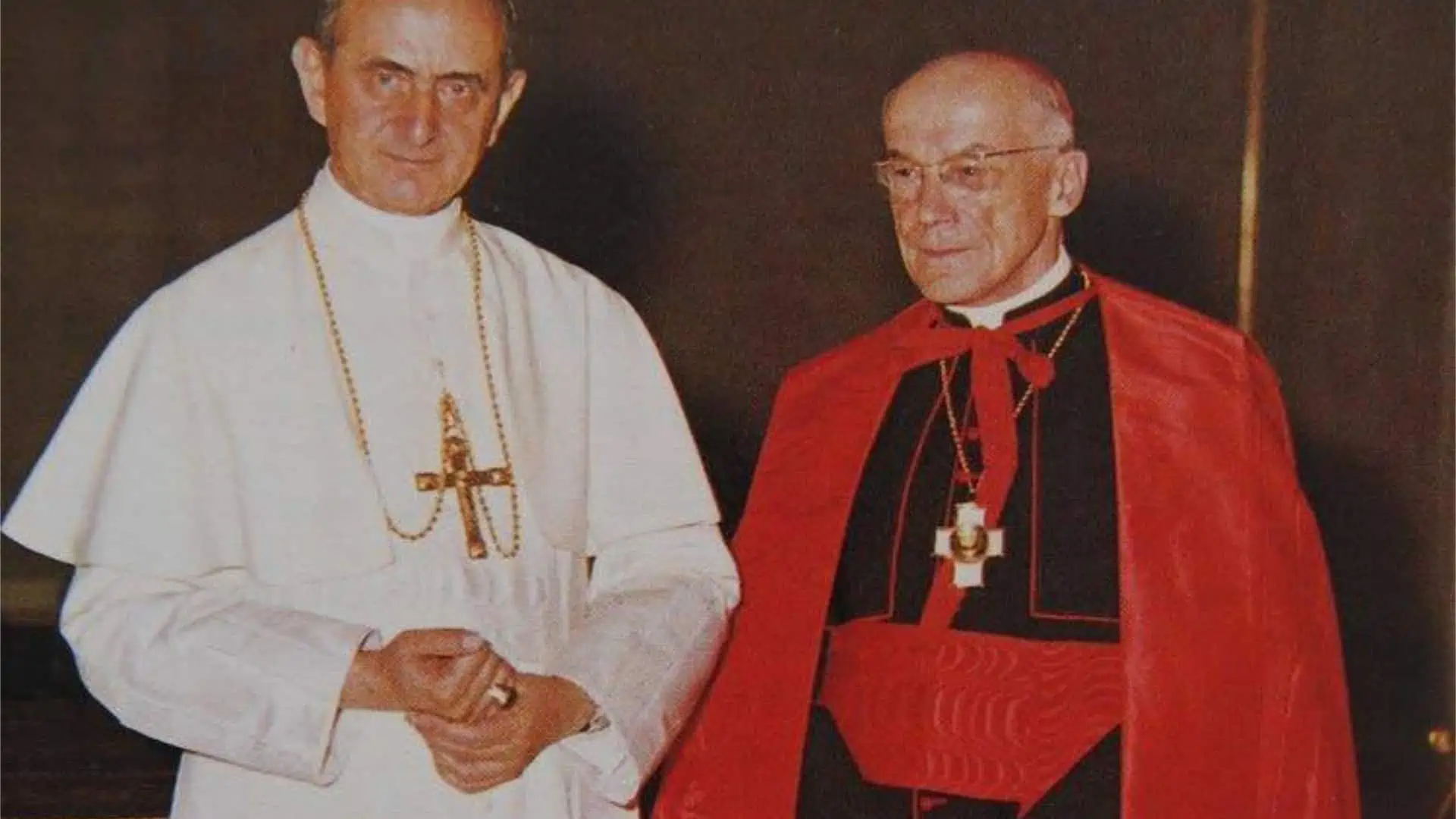Discussing the clerical equivalent to white tie or black tie is a little misleading as ceremonial court, academic and clerical attire supersede any type of formal civilian attire. However, at occasions held outside of courts, convocation halls and cathedrals, representatives of royalty, academia and the church must adapt to civilian dress codes. While the former two simply adopt the white-tie or black-tie ensemble that’s called for, clerics of various faiths often dress in unique equivalents.
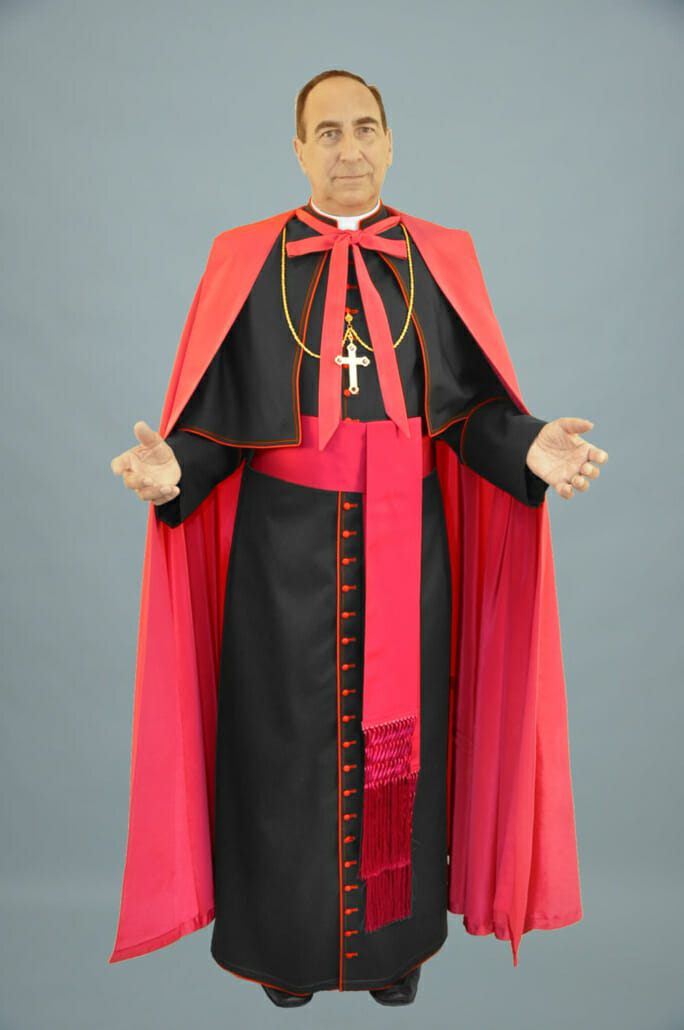
Roman Catholic Formal Wear: Traditional & Contemporary
Traditional
The traditional formal attire for non-liturgical occasions consists of a cassock (black robe) dressed up with a ferraiolone which is a light-weight ankle-length cape intended to be worn indoors. (Note that this vestment is often referred to as a ferraiolo although technically the latter is shorter and used for less formal occasions.) The color and fabric of the ferraiolone is determined by the rank of the cleric and can be scarlet watered silk, purple silk, black silk or black wool.
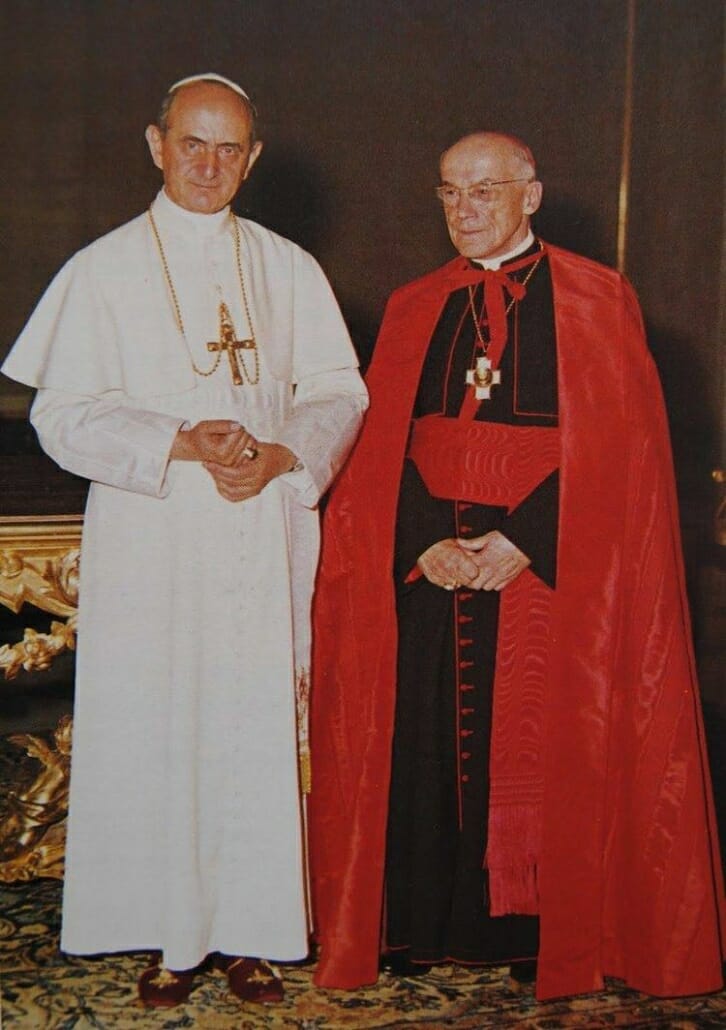
This outfit is officially classified as Pian dress (or abito piano in Italian) and is appropriate for occasions such as a papal audience, a state dinner, the acceptance of personal honors, parades, press conferences, banquets, or any other event that would call for White Tie or Black Tie.
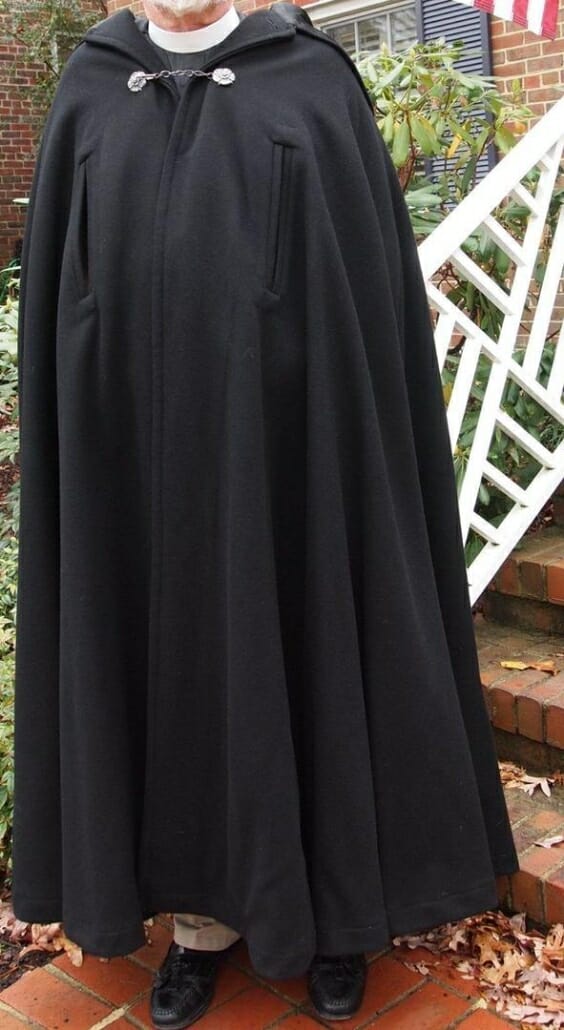
For outerwear, the black cape (cappa nigra) aka choir cape (cappa choralis) is most traditional. It is a long black woolen cloak fastened with a clasp at the neck and often has a hood. Cardinals and bishops may also wear a black plush hat or, less formally, a biretta.
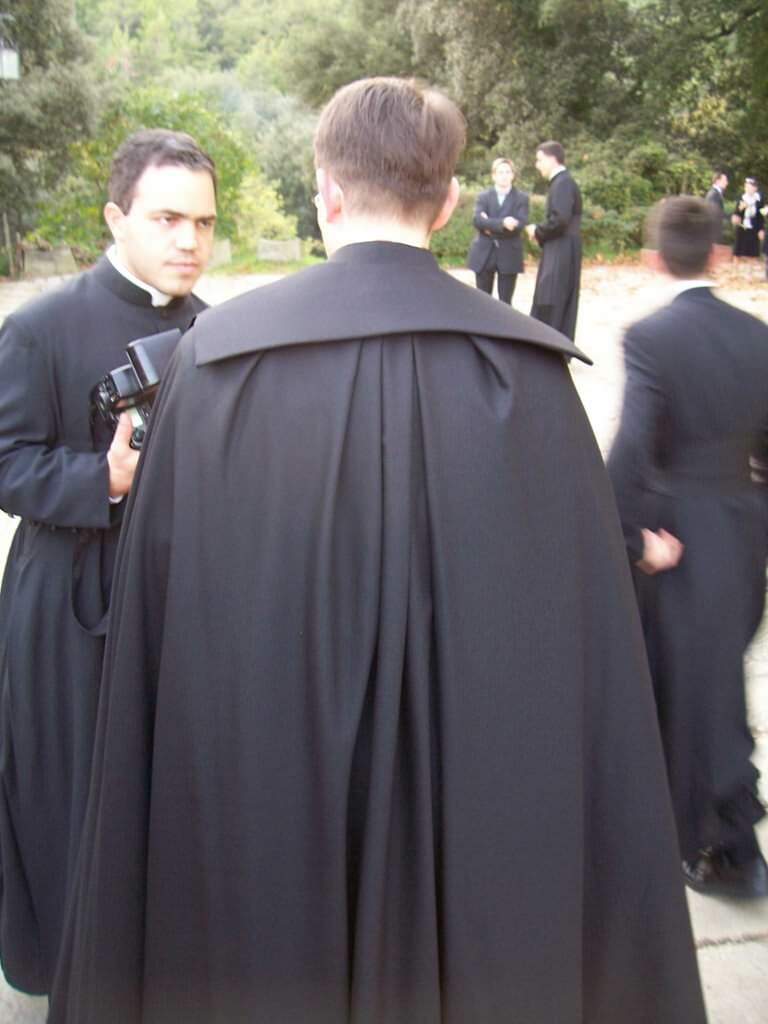
Contemporary
In actual practice, the cassock and especially the ferraiolone have become much less common and no particular formal attire has appeared to replace them. The dressiest alternative is a clerical vest incorporating a Roman collar known as a gilet [pronounced zhee lay] worn with a collarless French cuff shirt and a black suit or tuxedo. Dress versions of these vests button up the front, are available in various black materials and can be backless or full-back. The finest are tailor made. They are sometimes known as a rabat but that term is not as precise as it also often applied to a simple black dickie attached to a clerical collar.
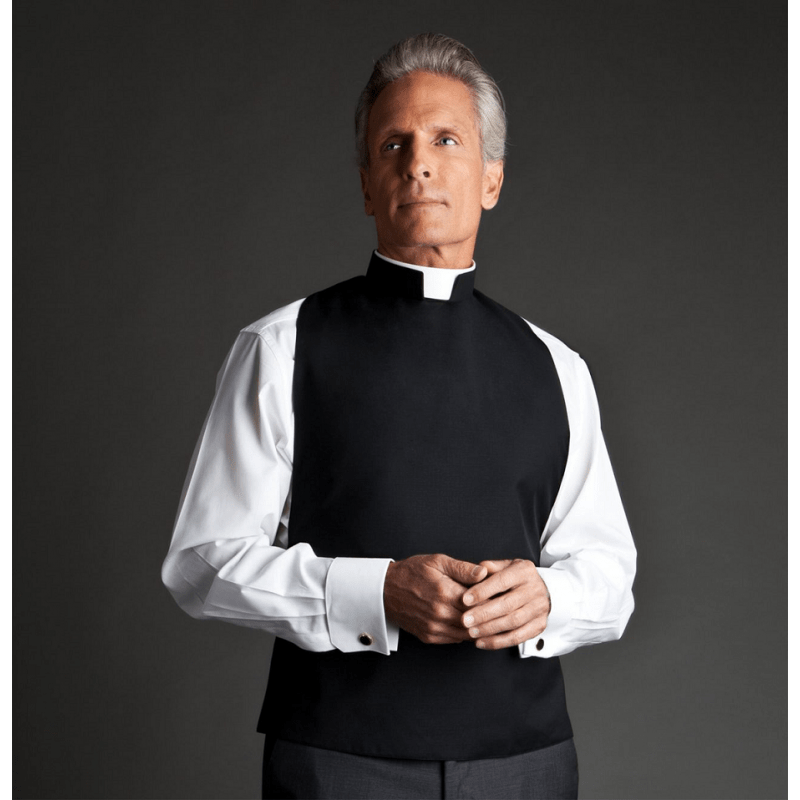
A less traditional version of the cappa nigra is the cassock overcoat known as a douilette or as a greca, the Italian word for “Greek” because it reminded Roman clergy of the long black overcoat worn by Eastern priests. It is black, double-breasted, has a plain or velvet collar and is of slightly longer length than the cassock so as to entirely cover it. If a cassock is not worn then a normal length black overcoat will suffice.
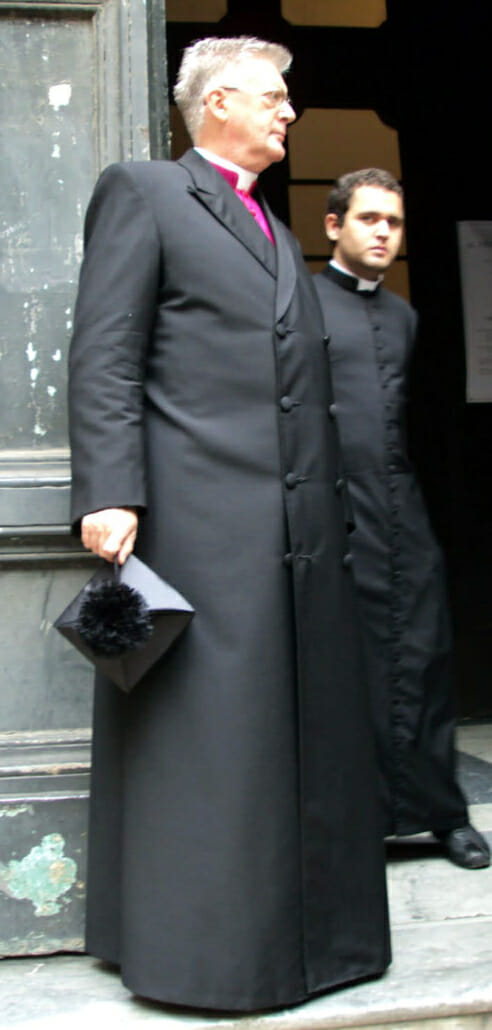
Anglican Formal Wear
Although the Church of England does not stipulate how clergy should dress outside of church, Father Hughes of All Hallows church in Twickenham informs the Guide that Anglican clergy follows traditions similar to Roman Catholic clergy:

- Typical formal attire consists of the distinctive clerical collar and a black or dark suit over a black or dark shirt
- If a dinner suit is worn then the jacket should be black and usually has peaked lapels but without silk facings.
- A gilet can be worn with a collarless white shirt with double cuffs
- As with Catholic clergy, for outerwear a cappa nigra or a cassock overcoat is appropriate or, if a cassock is not worn, a normal length black overcoat
Unique to Anglican clergy is the clerical version of the Victorian coat which fastens by a single button below the neck and has a fitted collar rather than lapels. Like the civilian frock coat of old, this indoor garment is worn for formal day functions.
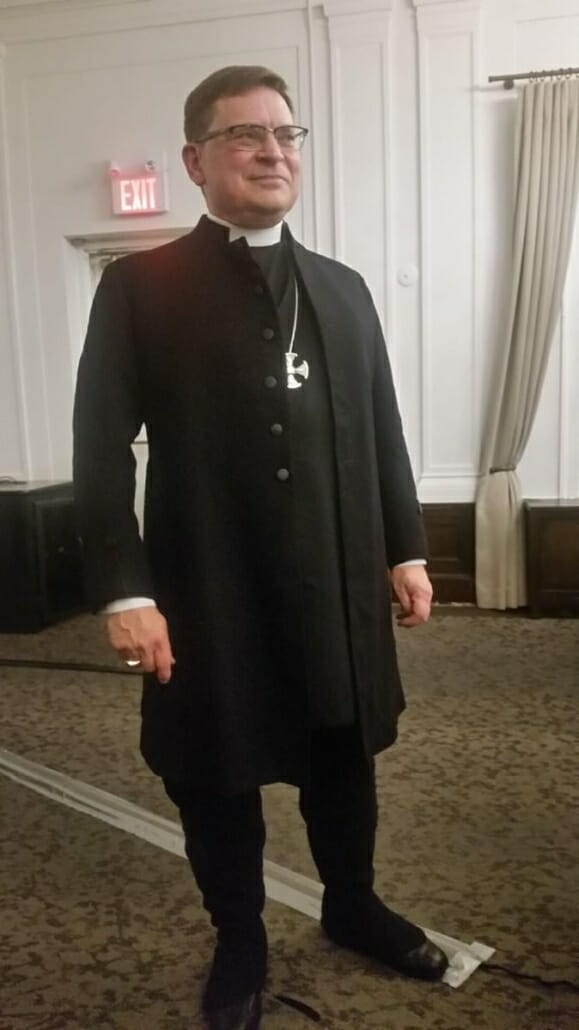
Also of note is that while the Anglican clerical collar for daily wear is often the slip-on or tunnel variety, collar for formal occasions are usually either “full” aka “Roman” style or they are “tonsure” style. The first style exposes the white collar band in its entirety while the second shows only the top of the band except at the throat where the full width is exposed.
Vintage Clerical Attire
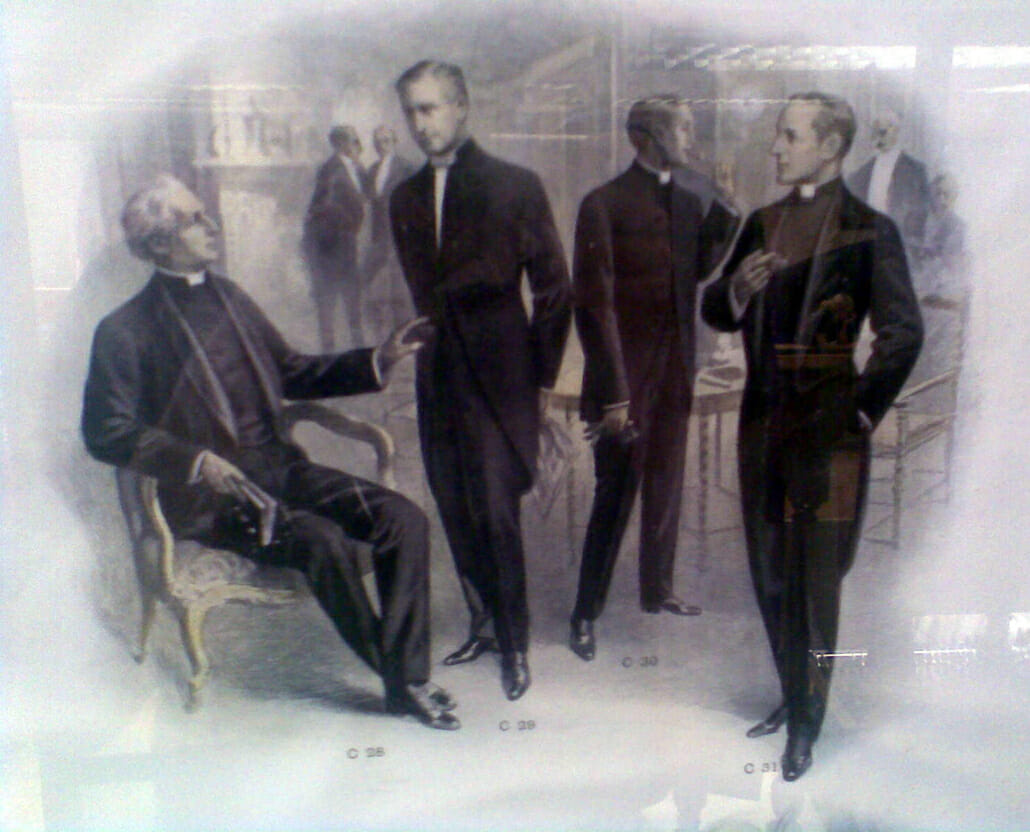
An illustration of Victorian High Church Anglican clergy wearing various types of formal attire. A reader photographed this picture hanging in Shepard and Woodward, a gentleman’s clothing shop in Oxford.
Sources for further review:
www.sheltersites.com/clericaldress/ (A definitive resource that quotes Church law extensively)
Costume of Prelates of the Catholic Church: According to Roman Etiquette
https://web.archive.org/web/20070330011257/http://www.geocities.com/changes1611/vestmentsofpriests.html
Explore this chapter: 9 Advanced Black Tie & Tux Coverage
- 9.1 Black Tie, Tuxedo & White Tie Evening Wear Glossary
- 9.2 Black Tie Dress Code for Women – Ladies’ Evening Wear
- 9.3 Tuxedo Black Tie Myths & Merits Debunked
- 9.4 Orders Decorations & Medals with Black Tie & White Tie
- 9.5 Clerical Formal Wear
- 9.6 Military Formal Attire – Mess Dress
- 9.7 Scottish Highland Dress, Irish, and Welsh Formal Black Tie & White Tie Attire
- 9.8 Women’s Tuxedos and Tailcoats
- 9.9 Smoking Jacket Guide
- 9.10 Formal Evening Wedding Attire & Etiquette
- 9.11 How To Wear A Tuxedo Like James Bond
